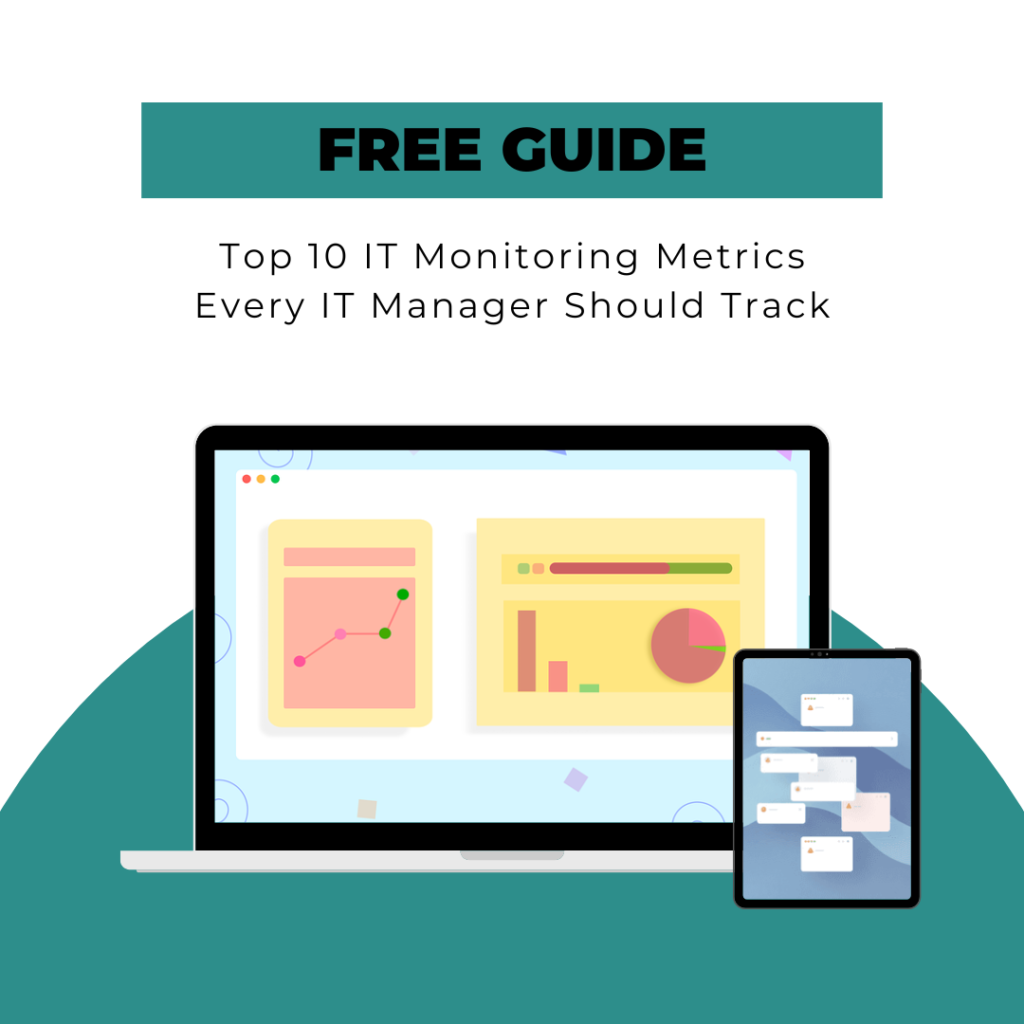Introduction
In today’s digital-first business environment, system downtime isn’t just an inconvenience—it’s a direct threat to revenue, reputation, and customer trust. Proactive IT monitoring stands as the strategic shield against these risks, utilizing advanced tools to detect and address potential issues before they impact operations.
IT leaders struggle to keep everything running smoothly while working with tight budgets and increasingly complicated systems. The traditional reactive approach to IT management leaves organizations vulnerable to:
- Unexpected service disruptions
- Resource-draining firefighting scenarios
- Compromised system performance
- Escalating operational costs
Kibalto specializes in transforming these challenges into opportunities through robust monitoring solutions powered by industry-leading platforms Zabbix and Grafana. Our monitoring framework delivers real-time insights across your entire IT infrastructure, enabling data-driven decisions and preemptive problem resolution.
By implementing comprehensive monitoring strategies, organizations can achieve a significant return on investment through reduced downtime, optimized resource allocation, and enhanced operational efficiency.
Understanding Proactive IT Monitoring
Proactive IT monitoring acts as a comprehensive surveillance system for your digital infrastructure, detecting and addressing potential issues before they impact business operations. This preventive approach encompasses several critical components:
1. Network Monitoring
- Real-time tracking of bandwidth usage
- Latency measurement across network paths
- Detection of unauthorized access attempts
- Analysis of packet loss and network performance
2. Server Monitoring
- CPU and memory utilization tracking
- Storage capacity management
- Process and service availability checks
- System temperature and hardware health monitoring
3. Website and API Monitoring
- Response time measurement
- SSL certificate expiration tracking
- User experience metrics
- API endpoint availability verification
4. Cloud Infrastructure Monitoring
- Resource utilization across cloud platforms
- Cost optimization tracking
- Auto-scaling performance analysis
- Multi-cloud service integration monitoring
Zabbix and Grafana form the backbone of an effective monitoring strategy. Zabbix provides robust data collection and alerting capabilities, automatically gathering metrics from diverse IT components. Grafana transforms this data into actionable insights through customizable dashboards, enabling IT teams to visualize trends, identify patterns, and make data-driven decisions.
These tools work in tandem to create a unified monitoring ecosystem, providing granular visibility into every aspect of IT infrastructure while maintaining scalability for growing environments. Such a proactive approach not only helps in identifying issues early but also plays a crucial role in reducing IT downtime and optimizing infrastructure.
The Challenges Faced by IT Managers
IT managers deal with important operational problems that directly affect how well a business performs and how stable it is. One major issue they face is dealing with unexpected service outages, which can cost organizations an average of $5,600 per minute in lost revenue and productivity.
Resource Allocation Challenges
Another urgent problem is how resources are allocated:
- Understaffed Teams: Technical specialists are stretched thin, handling multiple responsibilities
- Manual Monitoring: Time-consuming tasks that take away focus from strategic initiatives
- Budget Constraints: Balancing cost-effective solutions with reliability requirements
The constant stream of alerts creates significant challenges:

Alert Fatigue and Noise Overload
- Overwhelming volume of notifications leading to alert fatigue
- Difficulty in distinguishing critical alerts from non-urgent ones
- Risk of missing important issues due to notification overload
- Need for better alert prioritization and filtering systems
Lack of Visibility Across Systems
IT teams struggle with limited visibility:
- Siloed monitoring tools creating blind spots
- Difficulty in correlating issues across different platforms
- Limited end-to-end visibility of service dependencies
- Challenges in tracking user experience across systems
Slow Incident Response Times
Response time issues impact service quality:
- Delayed problem detection and resolution
- Complex troubleshooting due to limited system visibility
- Communication gaps between different IT teams
- Need for streamlined incident management processes
Vendor and Tool Sprawl
Managing multiple tools creates additional complexity:
- Increased operational overhead
- Integration challenges between different tools
- Higher training and maintenance costs
- Difficulty in maintaining consistent monitoring practices
Complexity of Modern IT Infrastructure
The complexity of today’s IT systems makes these challenges even worse:
- Multi-vendor environments that require different areas of expertise
- Legacy systems that need to work with new technologies
- Growing cybersecurity threats that require constant vigilance
- Scaling infrastructure while still maintaining performance
Difficulty Proving ROI of Monitoring Investments
Demonstrating value presents unique challenges:
- Complex metrics for measuring prevention benefits
- Difficulty quantifying avoided incidents
- Challenge in showing long-term cost savings
- Need for better ROI measurement frameworks
These challenges create an urgent need for automated, efficient solutions that make operations smoother and make the best use of resources. The right monitoring tools can turn these problems into chances for better operational efficiency and lower costs.
Evaluating the ROI of Proactive IT Monitoring
Proactive IT monitoring delivers measurable returns across three critical business dimensions:
1. Downtime Reduction Impact
Unplanned system outages cost organizations an average of $5,600 per minute. Proactive monitoring systems detect potential failures before they escalate into service disruptions:
- Early Warning Detection: Identifies system anomalies 24-48 hours before they cause operational issues
- Predictive Analytics: Analyzes performance patterns to forecast potential bottlenecks
- Automated Response: Triggers immediate corrective actions for common issues
2. Staff Time Optimization
Manual monitoring tasks consume up to 30% of IT staff time. Automated monitoring solutions transform resource allocation:
- Task Automation: Reduces routine checks from 4 hours to 15 minutes daily
- Intelligent Alerts: Eliminates false positives by 75%
- Resource Reallocation: Enables staff to focus on strategic projects

3. Enhanced Resolution Efficiency
Real-time monitoring accelerates issue resolution through:
Response Time Metrics
- Mean Time to Detect (MTTD): Reduced from hours to minutes
- Mean Time to Resolve (MTTR): Decreased by up to 70%
- First-Time Fix Rate: Improved by 45%
Operational Benefits
- Precise issue location identification
- Detailed diagnostic information
- Historical performance data for root cause analysis
💡 What These Metrics Actually Mean:
• Mean Time to Detect (MTTD): How quickly your monitoring system identifies an issue. Lower MTTD = faster awareness.
• Mean Time to Resolve (MTTR): How long it takes to fully fix an incident. Reducing MTTR means shorter disruptions.
• First-Time Fix Rate: The percentage of incidents resolved on the first attempt—higher rates = less rework and faster recovery.
🔍 Want to Improve Your IT Monitoring Skills?
Download Our Free Guide: “Top 10 IT Monitoring Metrics Every IT Manager Should Track“
✅ Easy explanations of essential metrics
✅ Ready-to-use monitoring templates
✅ Expert tips for implementation
✅ Real-world examples
Don’t Wait for Your Next Outage! 👉 Get Your Free Guide Now and Upgrade Your IT Monitoring Strategy Today!

Quantifiable Financial Returns
Organizations implementing proactive monitoring report:
- 65% reduction in system downtime
- 30% decrease in operational costs
- 40% improvement in resource utilization
- 50% faster incident resolution
These metrics translate into tangible cost savings:
Annual Cost Savings = (Downtime Hours Prevented × Cost Per Hour) + (Staff Hours Saved × Labor Rate) + (Incident Resolution Time Saved × Business Impact)
Example Calculation:
- Annual downtime hours prevented: 100 hours
- Cost per hour of downtime: $5,000
- Staff hours saved annually: 500 hours
- Average IT staff hourly rate: $75
- Incident resolution time saved: 200 hours
- Average business impact per hour: $2,000

Annual Cost Savings = (100 × $5,000) + (500 × $75) + (200 × $2,000) = $500,000 + $37,500 + $400,000 = $937,500 total annual savings!
Real-world implementations demonstrate ROI achievement within 6-8 months through reduced operational expenses and enhanced system reliability.
Case Study: Kibalto’s Monitoring Solutions in Action
Kibalto’s implementation at a global leader in pool and wellness equipment manufacturing, demonstrates the tangible benefits of proactive IT monitoring. The partnership transformed Fluidra’s infrastructure management through strategic deployment of Zabbix and Grafana solutions.
Key Implementation Results:
- Network Stability: 99.999% uptime achieved across distributed data centers
- Alert Response: 75% reduction in mean time to resolution (MTTR)
- Resource Optimization: 40% decrease in IT staff overtime hours
The monitoring solution spans:
- 150+ technology integrations
- Custom interactive dashboards
- Automated ticketing system
- Real-time performance metrics
Under the leadership of Senior Network Engineer Albert Sanz, our client’s Global Infrastructure team leveraged Kibalto’s expertise. This strategic partnership enabled the company to maintain critical operations across multiple locations while significantly reducing operational costs through automated monitoring and rapid issue detection.
The implementation showcases Kibalto’s ability to deliver scalable, secure monitoring solutions that drive measurable ROI through enhanced system availability and operational efficiency.
Conclusion
Proactive IT monitoring transforms from a cost center into a strategic advantage for modern businesses. The measurable investment return spans across multiple dimensions:
- Reduced operational disruptions
- Enhanced resource allocation
- Streamlined IT operations
- Data-driven decision making
- Accelerated problem resolution
Kibalto’s expertise in implementing robust monitoring solutions through Zabbix and Grafana positions organizations for sustained success. Our proven track record of optimizing IT infrastructure, combined with deep technical knowledge and personalized support, makes us the trusted partner for businesses seeking to maximize their monitoring investments.
🎯 Ready to maximize your IT infrastructure’s ROI through proactive monitoring?
Book a FREE 30-minute consultation with one of our experts and discover how much ROI your infrastructure could be generating through smarter monitoring.
- Schedule a 30-minute discovery call with our specialists
- Discuss your specific monitoring challenges
- Receive a personalized assessment of your infrastructure needs
- Explore potential ROI improvements for your organizationTalk to an infrastructure expert

📞 Contact our team:
- Phone: +34 677804635
- Email: contact@kibalto.com
- Available hours: 9:00 AM – 6:00 PM CET
Transform your IT infrastructure management today. Book your consultation and discover how Kibalto’s proactive monitoring solutions can drive measurable ROI for your business.


